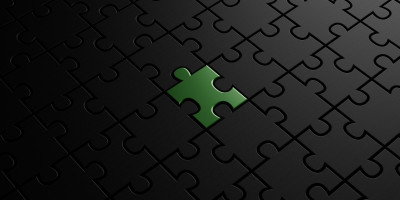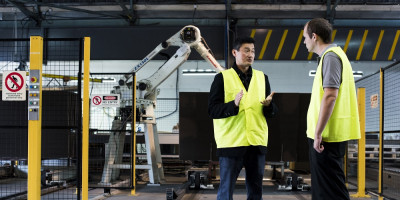Engrich: Using 3D printing to help build a bespoke motorcycle
Upper Hutt engineering firm Engrich takes tinkering in the garden shed to a new level. A precision engineering and design company, with Callaghan Innovation’s help, it set about to create a bespoke motorcycle.
At a glance
- Precision engineering and design business Engrich turned its hand to developing a bespoke luxury motorcycle.
- Engrich teamed up with Callaghan Innovation, using 3D printing technology to help produce certain components for the bike Engrich couldn’t machine.
- The ‘Engrich ART’ motorcycle was completed in 2019, with 3D printing producing a number of key components including engineering nylon used for the main air box body, air intake and rear seat cowl assembly.
The need for an innovative solution
Engrich Ltd does all the usual things a precision engineering and design shop does, such as CNC machining and product prototyping. It’s also developing a bespoke luxury motorcycle for the international collector market. As you do.
The first Engrich A.R.T. 1200cc road bike is due to be completed mid-way through 2019. All going well it will manufacture the exclusive machines to order at a cost of around $250,000 each. “There are a lot of collectors in the US and Europe that appreciate this level of work and are willing to pay for it,” Director Leigh Richardson says.
Leigh’s background helps him understand what potential customers want. He used to work in the Design department at Triumph motorcycles in the UK, and has experience producing goods for luxury brands including Hugo Boss and Burberry. “I’ve seen how people in this target market appreciate finish levels on materials and components,” he says.
Nevertheless, creating the A.R.T. has been no mean feat. Due to factors ranging from material costs, wastage time and unusual geometry, it soon became obvious there were certain components that Engrich would not be able to machine.
At around this time Callaghan Innovation established AddLab, its specialist facility for additive manufacturing or 3D printing at the nearby Gracefield Innovation Quarter. Engrich and AddLab got talking, and between them they worked out a solution.
Additive advantage
The most viable option for producing the A.R.T.’s airbox and a couple of body parts was to 3D print them. Using an injection moulding process would have cost over $100,000 and even machining them would have cost $10,000. Additive manufacturing was a fraction of the cost, plus the parts could be turned around within seven days.
Engrich now has a good feel for its use and will look to 3D print other components. Its partnership with AddLab was an advantage as other consultancies weren’t interested in the overall project and investigating solutions, Leigh says.
“With the AddLab we could have a chat and work out what things we could do to the design to help remove any possible issues with the printing,” he says.
While quick iterative prototyping is one great application for 3D printing, AddLab aims to get Kiwi firms looking at the wider business case for the technology and how it can improve their production, just as it did for Engrich.
Robert Blache, Callaghan Innovation’s Future Insights Manager Advanced Manufacturing, says at a recent 3D printing conference in Germany local print service providers talked about how customers often expected to simply apply 3D printing without changing the part design.
“They told me the customer will pull a part out of their pocket and ask, ‘how much does it cost to print this?’. They were pointing out that’s not how it works.”
Business use
However, the conference also heard examples of how 3D printing can provide a real business advantage, Robert says.
Appliance manufacturer Miele embraced the technology when it discovered designs to 3D print ‘spare’ parts for its appliances were available online. Instead of taking legal action it kicked off its own 3D printing initiative.
It found that the technology wasn’t – yet – suitable for mass-producing end parts, but that 3D printing small components such as jigs and fixtures improved factory operations. It also found that shop floor staff were best placed to identify these opportunities, so it launched an internal 3D training programme to build capability.
Chris Thomson, Group Manager Advanced Manufacturing at Callaghan Innovation, says AddLab can help Kiwi firms explore how to utilise the technology.
We’re wanting to inspire companies to use 3D printing in customising or improving the performance of products, and to tackle supply chain issues such as hard-to-source parts,
he says.
This article was first published in EMA Business Plus magazine.



























